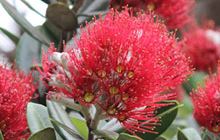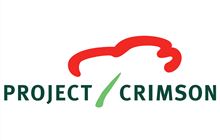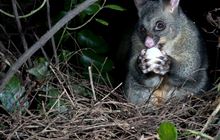Rātā
Introduction
Rātā trees, along with the pōhutukawa, are one of the best known native trees in New Zealand.Native birds benefit from rātā, but as possum numbers increase the threat to native birds and to rātā has also grown.
Description
The rātā and pōhutukawa belong in the myrtle family of trees. Other members include mānuka, kānuka and swamp maire.
New Zealand has 10 rātā species:
- 3 tree species
- 1 shrub species
- 6 climbing rata species (these are vines and do not form trees).
Rātā trees have glossy dark green leaves and trunks that are often gnarled and twisted. However, they are best known for their brilliant red flowers that appear in profusion from November to January, depending on location, and can be seen from some distance away.
The trees tend to flower well only once every few years. Southern rātā seem to favour the high rainfall conditions of the West Coast.
Native birds such as the tui, bellbird and kākā all benefit from the presence of rātā trees in the forest. Native bees, honey bees, bats and lizards also feed on the flower nectar. Old trees provide potential roosts for bats.
The two main species of tree rātā are the northern and southern. Very few Bartlett's rātā remain. Parkinson’s rātā is a also very localised.
All rata species are currently listed as Threatened partly due to the potential threat from myrtle rust.
Northern rātā
Northern rātā (Metrosideros robusta) is one of New Zealand's tallest flowering trees. It usually begins life as an epiphyte (or plant perched on a host tree) high in the forest canopy.
Its roots grow down to the ground, finally enclosing the host tree and producing a huge tree up to 40 metres high with a trunk up to 3 metres in diameter.
It is found throughout the North Island and in the South Island, south to about Westport. Hybrids with pōhutukawa are common in the upper North Island where the species distributions overlap.
Trees can live for up to 1,000 years old.
Southern rātā
Southern rātā (Metrosideros umbellata) grows from a seed in the ground. It can grow more than 15 metres high with a trunk 1 metre through.
Southern rātā is the most widespread of all New Zealand rātā, found from sea level to 760 m. It's distributed from high Northland and Coromandel outcrops, to subantarctic Auckland Islands where it forms the country's southernmost forests. The most dense display of southern rātā are along the South Island's West Coast.
Trees can be up to 500 years old.
Bartlett's rātā
Bartlett's rātā (Metrosideros bartletii) has white flowers and pale, papery bark, that make it unique among New Zealand rātā.
This species was discovered in a forest remnant near Cape Reinga in 1975 and is listed as endangered. Very few adult trees remain.
Parkinson’s rātā
Parkinson’s rātā (Metrosideros parkinsonii) is a small tree or shrub that grows to about 7 m high.
In the North island it's restricted to Te Hauturu-o-Toi / Little Barrier Island and Great Barrier Island/Aotea in the North Island. In the South Island you'll find Parkinson’s rātā in northwest Nelson, and the Paparoa Ranges to just north of Hokitika. It's found from sea level to about 920 m.
Threats to pōhutukawa and rātā
Possums
As possum populations have built up in forest areas, there has been a corresponding loss of some of our forest species.
Possums browse a wide range of plants but show strong preferences for some species like rātā and pōhutukawa.
Rātā and pōhutukawa trees cannot tolerate sustained possum browsing. A mature tree can be killed in three years with intensive browsing and even young trees, although they can survive for longer, will eventually die if browsed regularly.
When the browsed trees die back, the canopy, or top layer of the forest, is opened up. This exposes other trees to windthrow and damage from storms, insects, weed invasion, and diseases.
Myrtle rust
Pōhutukawa and rātā are members of the Myrtle family. They are all under potential threat from the fungal disease myrtle rust which is now established in New Zealand.
Other threats
Other threats include the following.
- People damage trees by using their branches for firewood, lighting fires under them and parking cars on their roots.
- Weeds and grasses often prevent regeneration by smothering young seedlings.
Our work
DOC works closely with other agencies such as Project Crimson to restore rātā and pōhutukawa habitat on the mainland through education and revegetation programmes.
DOC and other agencies also carry out sustained possum control operations. For rātā, the operations cover large areas of northern and southern rātā dominated forests of mainland New Zealand. For pōhutukawam, work continues in main coastal sites within the natural range of pōhutukawa (Northern North Island).
With myrtle rust, there is ongoing research and monitoring to determine what impact the disease will have on our native tree species.
All this work will help ensure the ongoing survival of these important iconic forest species.




